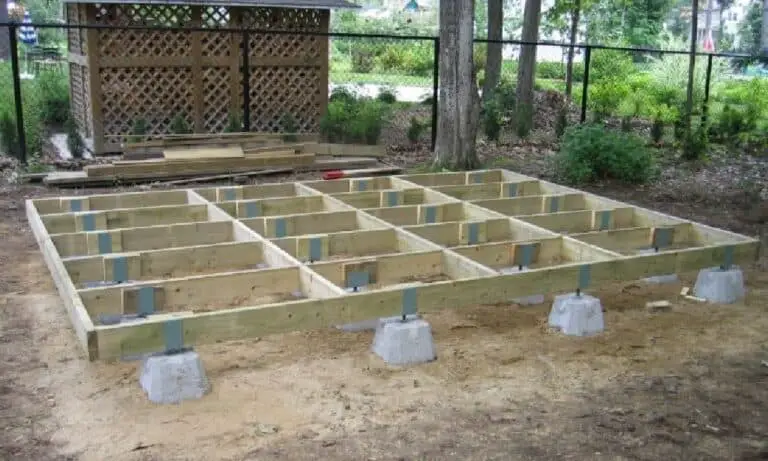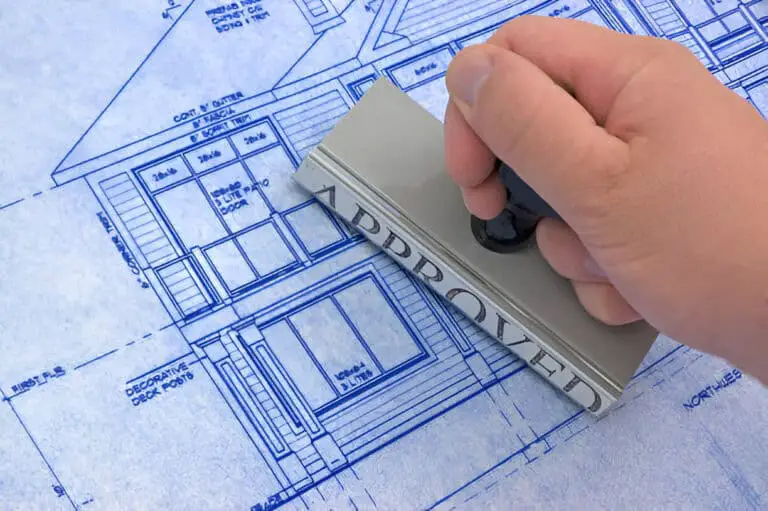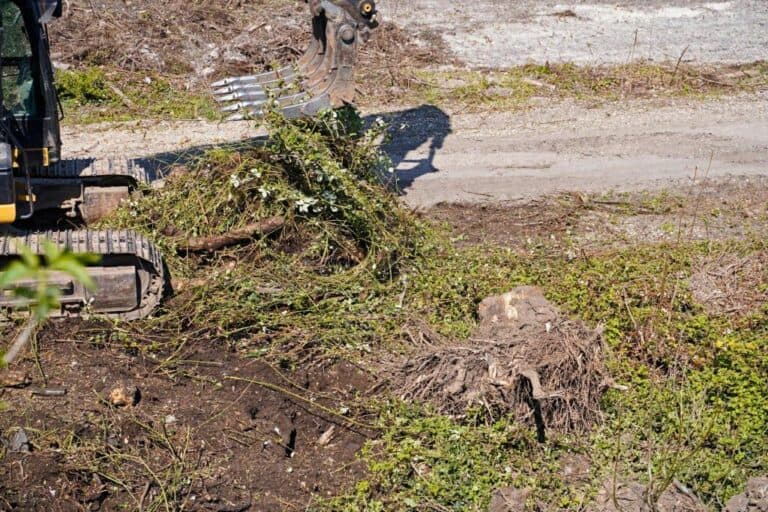Excavator vs. Dozer for Stump Removal and Clearing Land. Which Will Prevail?
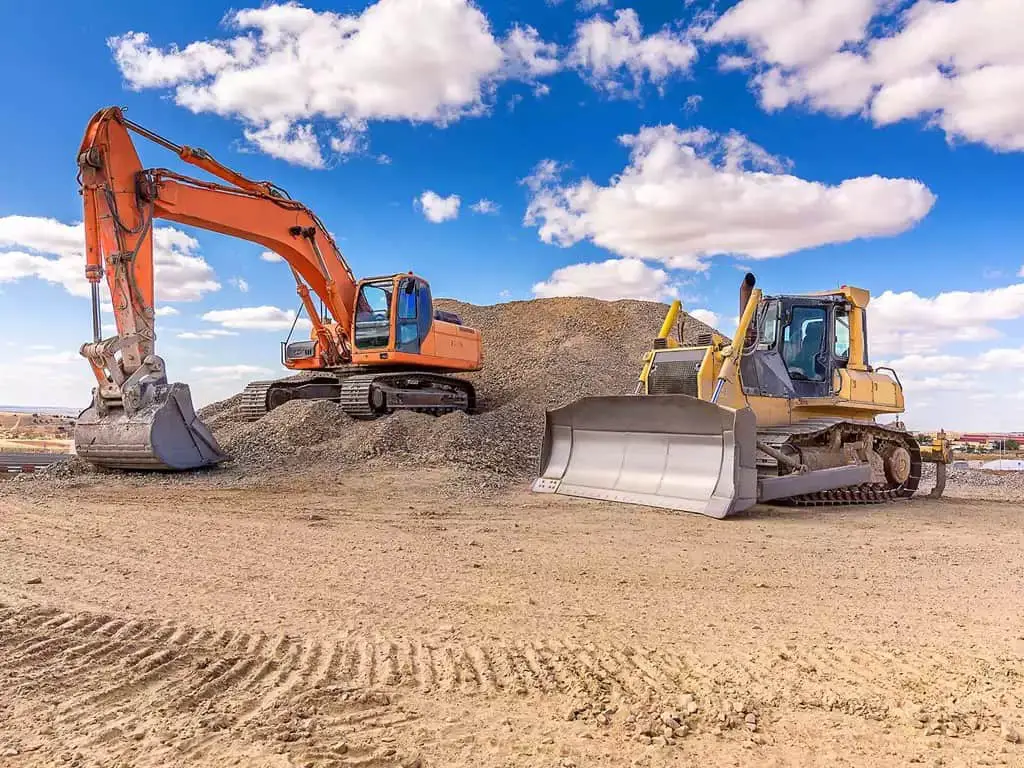
Stump removal and land clearing are essential tasks when it comes to preparing a site for construction, landscaping, or agricultural purposes. These projects require heavy machinery to efficiently and effectively remove stumps and clear the land.
Two commonly used machines for this purpose are excavators and dozers. Both of these construction machines are designed to tackle tough tasks and make the land clearing process more efficient.
In this article, we will explore the differences between excavators and dozers, their respective strengths, and which machine might be the best choice for your land clearing needs.
Understanding Excavators
The excavator is a versatile machine with a wide range of applications in the construction industry. Its main feature is a hydraulic arm, often called a boom, which is attached to a rotating platform known as the house. The boom is equipped with a bucket or an attachment that can be customized for various tasks, including stump removal and land clearing.
Strengths of the Excavator:
- Precision: One of the excavator’s biggest advantages is its precision. The hydraulic arm allows for precise movements, making it ideal for delicate tasks such as stump removal, where you need to avoid damaging surrounding vegetation or structures.
- Versatility: Excavators can be equipped with a variety of attachments, such as stump grinders, hydraulic shears, and mulching heads. This versatility makes them adaptable to different land clearing requirements. Whether you need to remove large stumps or clear thick vegetation, there’s likely an attachment that can get the job done.
- Digging Power: Excavators are known for their exceptional digging power. They can effortlessly remove stumps by digging around them and then using the bucket to lift and remove the debris. This digging capability also comes in handy when digging trenches or creating foundations.
- Mobility: Excavators are designed to move easily on various terrains, thanks to their tracks or wheels. This mobility enables them to navigate through rough or uneven surfaces, making them suitable for land clearing projects in diverse environments.
However, there are some factors to consider when deciding whether an excavator is the right choice for your land clearing needs. Excavators may not be the most efficient option for large-scale land clearing projects due to their relatively slower speed compared to dozers.
Additionally, the cost of renting or purchasing an excavator, along with any necessary attachments, should be taken into account.
Excavators’ digging depth may be restricted compared to dozers, which can affect the removal of deep-rooted stumps.
Understanding Dozer
The dozer, short for bulldozer, is a powerful machine specifically designed for pushing heavy materials, such as soil, rocks, and debris. It features a large metal blade, called a blade or a pusher, mounted on the front. The dozer relies on its sheer strength to remove stumps and clear land effectively.
Strengths of the Dozer:
- Pushing Power: The dozer’s primary strength lies in its ability to push massive amounts of material. The powerful engine and sturdy construction of the machine allow it to exert tremendous force on stumps and other obstacles, easily pushing them out of the way.
- Speed: Dozers are generally faster than excavators, thanks to their robust design and superior traction. This makes them more efficient for large-scale land clearing projects, where speed is crucial.
- Blade Options: Dozers come with different blade options, including straight blades and U-blades. Straight blades are ideal for pushing soil and debris, while U-blades are better suited for carrying larger loads over longer distances. This versatility allows for flexibility in various land clearing tasks.
- Stability: Dozers have a low center of gravity, which provides excellent stability on uneven terrain. This stability is advantageous when working on slopes or in challenging ground conditions, ensuring safer and more reliable operations.
While dozers have several strengths, there are a few considerations to keep in mind. Dozers may not offer the same level of precision as excavators when it comes to delicate tasks like stump removal. The large blade of a dozer can potentially damage surrounding vegetation or structures if not operated with care. Additionally, maneuvering in tight spaces can be more challenging for a dozer compared to an excavator due to its size and limited mobility.
Excavator vs. Dozer: Comparing Performance and Key Strengths
To determine which machine prevails in stump removal and land clearing, it’s important to compare their performance based on various factors. Let’s delve into a comparison of excavators and dozers:
- Speed: Excavators generally have slower operational speeds compared to dozers. Their precision and control come at the cost of speed, making them more suitable for detailed work.
- Precision and maneuverability: Excavators have superior precision due to their ability to rotate the cab and manipulate the arm and bucket. This allows for precise digging, lifting, and placement of materials. Dozers, on the other hand, may have limitations in terms of maneuverability and precise control.
- Digging and lifting capabilities: Excavators excel in digging and lifting tasks. Their hydraulic systems provide exceptional digging power and control, making them highly effective in removing stumps and digging trenches. Dozers, while capable of digging and pushing, may not match the digging depth or lifting capacity of excavators.
- Adaptability to terrain: Dozers are known for their excellent traction and stability, allowing them to operate effectively on uneven or challenging terrain. They can navigate through mud, rocks, and steep slopes with relative ease. Excavators, although versatile, may face limitations on rough or soft terrain due to their weight distribution and track design.
- Versatility: Excavators offer more versatility with a range of attachments that can be easily swapped to accommodate different tasks. They can be equipped with specialized attachments for stump removal, such as stump grinders or hydraulic shears. Dozers, while they can have attachments, are primarily designed for pushing and leveling tasks.
- Project scale: Excavators are well-suited for smaller to medium-scale projects that require precision and detailed work. They are ideal for residential or commercial sites where space is limited. Dozers, with their larger size and pushing power, are better suited for larger-scale projects that require extensive land clearing.
- Cost considerations: The cost of renting or purchasing an excavator versus a dozer may vary. Excavators generally have higher hourly rates due to their versatility and precision capabilities. Dozers, being primarily focused on pushing and leveling, may have lower hourly rates. However, the specific costs depend on factors such as machine size, rental duration, and location.
To summarize, here’s a table that highlights the key strengths of excavators and dozers for stump removal and land clearing:
| Excavator | Dozer |
| Precision in delicate tasks | Powerful pushing force |
| Versatility with various attachments | Faster speed for large-scale projects |
| Digging power for stump removal | Different blade options for flexibility |
| Mobility on diverse terrains | Excellent stability on uneven terrain |
While excavators and dozers have their respective strengths and weaknesses, the choice between the two ultimately depends on the specific requirements of the project.
For smaller-scale projects that require precision and versatility, an excavator with specialized attachments may be the ideal choice. On the other hand, if you have a larger-scale project that demands speed and significant pushing power, a dozer could be the more efficient option.
It’s worth noting that some land clearing projects may benefit from using both machines in conjunction. For example, an excavator can be used to remove stumps and handle delicate areas, while a dozer can tackle bulk clearing and pushing tasks. This combination allows for a comprehensive and efficient land clearing process.
Stump Removal Techniques with Excavators
Using an excavator for stump removal involves a systematic process that maximizes efficiency and minimizes damage. Here’s a step-by-step guide to removing stumps with an excavator:
- Assess the stump: Evaluate the size, condition, and location of the stump. This will help determine the appropriate attachments and techniques to use.
- Clear the surrounding area: Remove any debris, rocks, or obstacles near the stump to create a safe working environment.
- Dig around the stump: Use the excavator’s bucket or a specialized attachment to dig around the stump, exposing its root system.
- Loosen the roots: Apply downward pressure with the excavator’s arm or bucket to loosen the roots from the soil.
- Lift and remove the stump: Once the roots are loosened, use the excavator to lift the stump out of the ground. If necessary, use a chain or sling to secure the stump before lifting.
- Fill the hole: After removing the stump, backfill the hole with soil to ensure a level surface. Compact the soil to stabilize the area.
- Dispose of the stump: Depending on local regulations and the size of the stump, you may need to dispose of it properly. Consider options such as grinding the stump or arranging for its removal from the site.
When using excavators for stump removal, certain attachments can enhance their effectiveness. Stump grinders, for example, can be mounted on the excavator’s arm, allowing for efficient grinding of the stump and its roots. Hydraulic shears are useful for cutting through large and stubborn roots. These attachments provide versatility and precision, ensuring thorough stump removal.
To achieve efficient and thorough stump removal with an excavator, consider the following tips and best practices:
- Choose the appropriate excavator size and attachment based on the size and density of the stumps.
- Take into account the soil conditions and the impact of excavation on the surrounding area.
- Maintain a safe distance from utility lines or other underground structures when digging around the stump.
- Follow manufacturer guidelines and recommended operating procedures for the excavator and its attachments.
- Regularly inspect and maintain the excavator to ensure optimal performance and safety.
Clearing Land with Excavators
Excavators are not only useful for stump removal but also excel at clearing land by removing vegetation, trees, and other obstacles. The following techniques and attachments can enhance their land clearing capabilities:
- Mulching attachments: Excavators can be equipped with mulching heads, which effectively shred and mulch trees, shrubs, and vegetation. This attachment allows for efficient clearing while simultaneously creating mulch that can be used for erosion control or landscaping purposes.
- Grapple attachments: Grapples enable excavators to grab, lift, and move large debris such as fallen trees and branches. They are particularly useful in land clearing projects where debris needs to be removed and stacked for disposal.
- Ripping techniques: For land with compacted soil or extensive root systems, ripping attachments can be employed. These attachments feature strong teeth that penetrate the soil, breaking it up and facilitating the removal of stubborn roots.
Clearing land with excavators offers several benefits. Excavators can access hard-to-reach areas, making them suitable for clearing uneven or sloped terrain. They are also versatile in handling different types of vegetation and obstacles, providing efficiency in large-scale land clearing projects.
However, it’s essential to consider potential considerations when using excavators for land clearing. Excavators may leave a more significant impact on the terrain compared to other methods, particularly if the soil is sensitive or prone to erosion. Therefore, environmental assessments and soil stabilization measures should be taken into account to mitigate any adverse effects.
Stump Removal Strategies with Dozers
When it comes to stump removal, dozers employ a different strategy compared to excavators. Here’s an outline of the approach and methods used with dozers:
- Assess the stump: Evaluate the size and condition of the stump to determine if it is suitable for removal using a dozer.
- Clear the surrounding area: Remove any obstacles, rocks, or debris around the stump to create a clear working zone.
- Push the stump: Position the dozer’s blade against the stump and apply forward pressure to push the stump out of the ground. This technique is effective for smaller or shallow-rooted stumps.
- Uproot the stump: If the stump does not easily come out with pushing alone, use the dozer’s blade to lift and uproot the stump by leveraging its root system.
- Repeat the process: Continue pushing, lifting, and uprooting stumps until the area is clear.
Dozers can also be equipped with specialized attachments to enhance stump removal:
- Stump splitters: Stump splitters are attachments that can be mounted on the dozer’s blade. They feature sharp blades or teeth that penetrate the stump, splitting it into manageable pieces for easier removal.
- Root rakes: Root rakes are designed to dig into the soil and rake out stumps and their root systems. They are effective for clearing areas with dense root networks.
- Stump grapples: Similar to excavators, dozers can be equipped with grapple attachments to grab and lift stumps, facilitating their removal from the ground.
It’s important to note that dozers are best suited for smaller or shallower stumps due to their pushing technique. Large or deeply rooted stumps may require additional methods or equipment for effective removal.
Land Clearing with Dozers
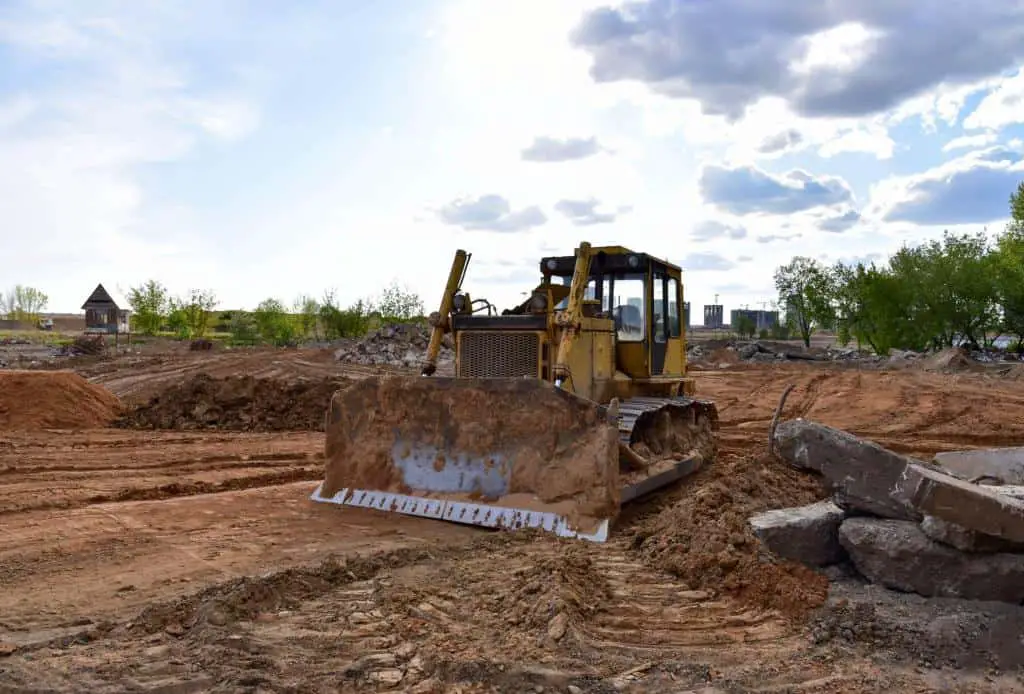
Dozers are widely used for land clearing projects due to their power, strength, and versatility. Here are some applications and techniques employed when using dozers for land clearing:
- Vegetation clearing: Dozers can efficiently push through dense vegetation, including small trees, bushes, and shrubs. The large blade and sheer power of the dozer allow for rapid clearance of overgrown areas.
- Tree removal: Dozers can be used to push over and uproot small to medium-sized trees. By leveraging the blade and the weight of the machine, dozers can topple trees and clear them from the site.
- Brush clearing: Dozers equipped with brush rakes or root rakes are effective at clearing brush and undergrowth. The rakes can penetrate and remove tangled vegetation, making way for further clearing or construction activities.
- Grading and leveling: Dozers excel at grading and leveling land, ensuring a smooth and even surface. They can push and redistribute soil, rocks, and debris to create a desired landscape or prepare the site for construction.
Using dozers for land clearing offers several advantages. They are capable of clearing large areas quickly, making them suitable for extensive projects. Dozers can navigate rough terrain and handle various soil conditions, providing versatility in different environments.
However, there are a few considerations when using dozers for land clearing. When compared to excavators, dozers’ pushing technique can occasionally cause more soil disturbance. This may require additional steps to ensure proper soil stabilization and erosion control. Additionally, dozers may have limitations in accessing tight or confined spaces compared to the more maneuverable excavators.
Factors Influencing Equipment Choice
When deciding between an excavator and a dozer for stump removal and land clearing, several factors should be considered. Here are the key considerations that can influence equipment choice:
- Project size: The scale of the project plays a crucial role in determining the appropriate equipment. Excavators are well-suited for smaller projects where precision and maneuverability are essential. Dozers are more suitable for larger-scale projects that require extensive land clearing.
- Terrain conditions: Consider the type of terrain you will be working on. If the site has rough or uneven terrain, a dozer’s stability and traction may be advantageous. For projects with limited space or delicate terrain, an excavator’s maneuverability and control may be preferable.
- Stump density: Evaluate the density and size of the stumps you need to remove. Excavators are generally better at handling smaller or medium-sized stumps, while dozers can effectively handle shallow-rooted stumps and vegetation clearing.
- Budget: Assess your budget and determine the most cost-effective option. Consider the rental or purchase costs, hourly rates, and maintenance expenses associated with each machine. Additionally, factor in fuel consumption and the potential need for specialized attachments.
- Environmental impact: Take into account any environmental considerations for your project. Excavators may cause more soil disturbance, while dozers may have a higher impact on vegetation and surface stability. Implementing measures for soil erosion control and environmental restoration may be necessary.
- Operator experience: Consider the experience and skill level of the operators who will be operating the equipment. Both excavators and dozers require competent operators to maximize their performance and safety. Ensure that the chosen equipment aligns with the operators’ expertise.
- Project timeline: Evaluate the project timeline and deadlines. Excavators may offer more precision and control, but their slower operational speed may impact overall project efficiency. Dozers, with their pushing power, may be faster at clearing large areas.
By considering these factors, you can make an informed decision on whether an excavator or a dozer is better suited for your specific stump removal and land clearing needs.
Conclusion
Choosing the right equipment for stump removal and land clearing is crucial for achieving efficient and successful results. Excavators and dozers each have their own unique features, advantages, and limitations. Excavators offer precision and versatility, making them suitable for detailed work, while dozers excel at pushing power and clearing large areas.
Consider project size, terrain conditions, stump density, budget, environmental impact, operator experience, and project timeline when making the equipment choice. Assess the specific requirements of your project and select the machine that aligns best with your needs.
Whether you opt for an excavator or a dozer, both machines can be equipped with excavator or bulldozer attachments and accessories that enhance their effectiveness in stump removal and land clearing. Excavators can utilize stump grinders, hydraulic shears, mulching heads, and grapples, while dozers can employ stump splitters, root rakes, and grapples. These attachments provide added capabilities and efficiency for tackling specific challenges.

